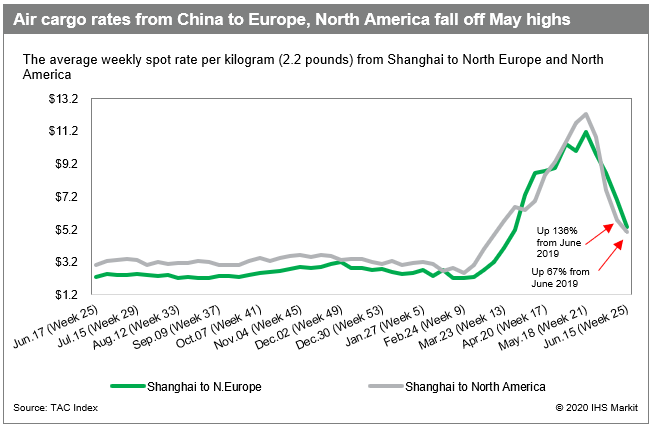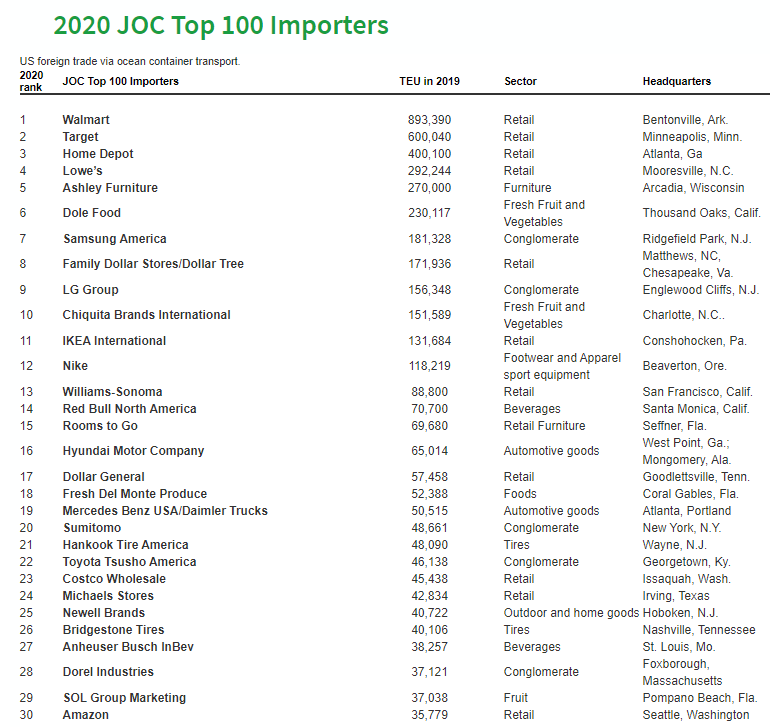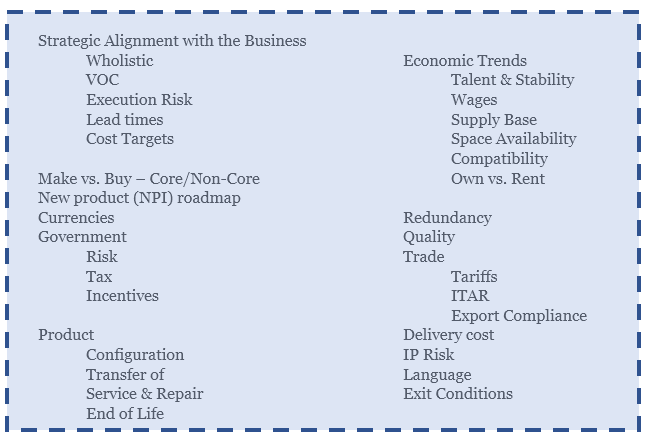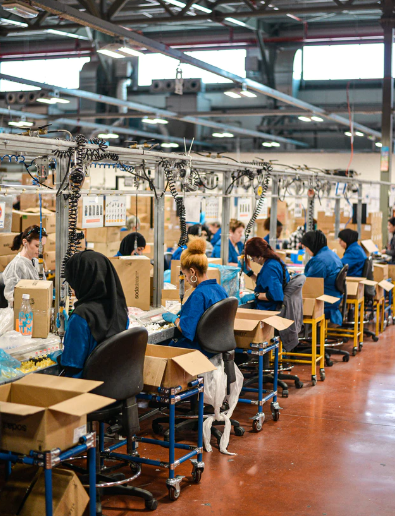This week, we’re looking again at how the COVID-19 pandemic is impacting the global economy. Next time, we’ll explore how supply chain leaders are managing it.
Let’s look at some numbers first:
Marine

Tensions between container lines, U.S. importers, and forwarders are building with tight capacities and a surge in Asia-U.S.-spot rates—drawing claims that carriers are artificially inflating rates with over 20 blank sailings scheduled from early June to early August.
Air Cargo

Air cargo rates have fallen from record highs in May with demand for medical supplies softening in the major markets. Rates from Shanghai to North Europe have fallen 52% from its high, while Shanghai to North America is down 59%.
North American Importers

Throughout my career, I’ve worked for some great companies. It’s interesting to look at the chart below. Toyota Tsusho is # 22, and neither John Deere nor Honeywell makes the list. Amazing times.
Transitioning Operations Abroad
IIn the third and final blog of this series, we’re finishing up by talking to the people who do this for a living. Meet our panel of experts—they share what they’ve learned from moving operations abroad:
Meet Andrew

Andrew is a small business owner and chief executive officer from Kansas City—he has a global supply chain. Andrew and I talked about the importance of going to see your source. Because as Andrew explains, not going onsite to make personal visits is a huge liability.
Go there.
So, what’s Andrew’s advice? Find a guide to help you navigate cultural norms, language barriers, and geographies. “There are 22 major languages in India alone,” Andrew says. “Written in thirteen different scripts with more than 720 dialects.” Do not go it alone.
Make an impression.
When you’re vetting suppliers, you need to get their attention. “You’re not Walmart,” Andrew says. Even if you work for a small business like Andrew’s—show them you can punch above your weight. Ask your connections for referrals for trusted suppliers. Build partnerships, leverage their networks, and exchange market intel.
Stay laser-focused.
Target manufacturers with a competitive advantage. Understand their capabilities, and ensure that the labor pool is conducive to the product lines you are manufacturing.
“Understand cultural differences so you can navigate turbulent waters.”
Meet Rob

Rob is the consummate multi-national transitions leader—if anyone needs advice—he’s the person to talk to. Rob focuses on global transitions working for a multinational and talked to me about building a Total Cost Model before making any move.
Build and end-to-end Total Cost Model

Build foundations first.
Make sure that you have buy-in from leadership and that they support the project. Before making any moves, know the Import/Export regulations and remember, “nothing gets done without the right resources.”
Mitigate unnecessary risks.
We talked about managing risk. “Fix problems before moving,” Rob shares, “don’t take them with you.” You can do this by mapping out current and future state, building a communications plan, and creating a risk matrix. Then, turn stones over and be open to accepting a lower rate of return.
“Once you lose a customer it takes a decade to gain them back”
Meet Kalin

Kalin is an eCommerce retail entrepreneur who moved his company’s production to Columbia from China last year. We talked about what sparked the transition and why he was drawn to Columbia.
Trade matters.
With the tariffs in place, China just wasn’t feasible for the longterm, and Columbia’s Free Trade Agreements made it attractive. Moving production to Columbia helped Kalin gain flexibility while reducing his bottom line and becoming a “big fish in the South American pool.
Culture can be a competitive advantage.
And as Kalin shares, Columbia’s culture had a lot to offer in terms of compatible working conditions, workforce skills, and productivity. Columbia is known for its historical cut-and-sew industry. There are fewer language gaps with Spanish speakers versus his previous supplier—speaking in Mandarin. And, the production lead times are significantly faster.
Location. Location. Location.
All business travel is limited within the hemisphere, and non-working holidays and time zones are in perfect alignment for more active collaboration and powerful results.
When you’re transitioning, Kalin encourages you to dive in and learn the business. “You don’t know what you don’t know,” he says. “Pace yourself and play the long game instead of the Top Line.” Be patient, invest in your connections, and developing relationships over time.
“What you want is out there, somebody can do it.”
Meet Michael

Michael specializes in indirect services in the Services Industry. He has sourced everything around the world and likes to have “one throat to choke.”
Aggregate global spend.
How? Michael hones in on the importance of buying products that can be moved around the world. Carve out master agreements with both your local and regional agents. And manage risk
By finding “one throat to choke”, exploring geographical advantages and hedging.
Keep your eyes on the stakeholder.
Regardless of what you think, your stakeholder always makes a choice. When you’re sourcing, you don’t get to choose. However, you can build trust and bring value that makes your recommendations mutually persuasive and beneficial.
That starts with investing time in cultivating real relationships. Know who you’re working with and show them your integrity.
Build a team.
“Build a team and trust them to do the work,” Michael says. Show them that they’re highly respected and that you can learn from mistakes together. And Michael’s biggest caveat? “Never say no,” he says with a smile. “But know the legal requirements.”
“Have fun, make it cool.”
Meet Gregg

Gregg is my favorite sourcing buddy—he works in Direct Materials in Traditional Manufacturing. This guy was global before any of us thought of it. Gregg is very big on culture.
Focus on culture.
“Ignoring cultural forces is a big mistake,” he says. “You have to go in with your eyes wide open.” That means studying ahead of time—tapping into resources like Kiss, Bow or Shake Hands—more on that later.
Remember, you’re a guest in a foreign country—act like it and be honored and polite. Follow the golden rule. The more polite and flexible you are the more the other side is open to developing a working relationship. Navigate the gaps in Eastern versus Western cultures with caution. Be careful about using expressions that may not translate—stay straight-forward with your language—watching hand gestures and metaphors.
Write it out and spell it out. The numbering systems in China and India are different from the Arabic system. So, ask them to repeat things—several times. Don’t underestimate the savvy and intelligence of locals by creating meaningful relationships.
“Don’t over promise and under deliver—be realistic”
Conclusions from this Week’s conversations
These were great conversations—I hope you all gained from them. Here are my takeaways:
- Regardless of what you think, the stakeholder still has the choice.
Build a highly respected team that has integrity.
- The common mistake is thinking the local culture is stupid.
Be polite and behave like an honored guest.
- Leadership has to sponsor and support the project.
Build an End-to-End Total Cost model.
- Rationalize where things go.
Pace yourself, play the long game.
- Go & See
Utilize technology to leapfrog into the future.
Next time, we’re introducing you to Catherine Tran, a young woman from Vietnam who just successfully navigated her way home from Market Harborough England to Hanoi Vietnam. Her story is very touching and shows us the human impact of Coronavirus beyond the supply chain.

